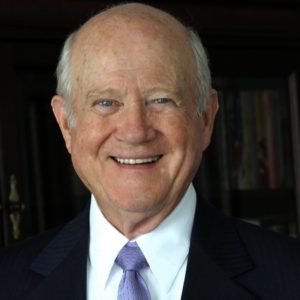They assume that employees won’t fulfill their capabilities unless they’re continually challenged and that stretch goals are just the way to do that.
It’s common leadership thinking that raising the bar to challenge employees will jump-start performance. However, the preponderance of research and my company’s own experience show the opposite is true. Contrary to their purpose, studies demonstrate that merely elevating targets doesn’t guarantee success, and that stretch goals often kill motivation. In particular, behavioral research shows that unrealistically high targets discourage people, while smaller, incremental goals, coupled with positive reinforcement, drive better performance.
Because research is clear that positively reinforcing behavior toward a goal is far superior to only celebrating when the goal is reached, a stretch goal limits the occasions for such reinforcement and therefore limits effort. Also, the more often employees hit a target and are reinforced, the faster they improve their performance, which means the smaller the goals, the better. Success breeds success.
Applying these principles, here are seven steps to share with your direct reports to make goal setting throughout your company more effective.
An insurance claims call center used mini-goals to improve accurate and expedited claims processing and service representatives’ availability. In just a few months, the center’s team showed a 50% decrease in the number of customer complaints and a 13% increase in the number of calls answered, even during inclement weather and the holidays.
In one example, a Dollar General distribution center manager set a goal of reducing the number of misdirected cartons—which eventually reached their destinations but required rework to deliver—from an average of 550 per week to 165 per week within seven weeks. Employees far exceeded the target, lowering the number to 85 in the very first week and 25 by the seventh week.
Following these steps will help boost productivity and performance considerably above what will be accomplished with stretch goals. While many executives and managers may not be as comfortable with this practice, it is clear that positive reinforcement accelerates behavior and, therefore, produces the fastest and highest improvement.
On the other hand, if your company needs to stretch performance beyond current processes, goal setting alone will not suffice. You and your leadership team also will need to nurture creativity, but the process is basically the same. Reinforcing employees for providing even the simplest idea for improvement can lead to an increasing number of productive changes in a process or to new processes altogether. If the organization values improvement through reinforcing small advances toward a goal or through ideas for doing something different, the results can be amazing.
In any case, stretch goals aren’t the answer to improving performance. Mini-goals will carry your company further, faster.
For more information on why stretch goals don’t work and what to do instead, see this podcast.

Chief Executive Group exists to improve the performance of U.S. CEOs, senior executives and public-company directors, helping you grow your companies, build your communities and strengthen society. Learn more at chiefexecutivegroup.com.
0

1:00 - 5:00 pm
Over 70% of Executives Surveyed Agree: Many Strategic Planning Efforts Lack Systematic Approach Tips for Enhancing Your Strategic Planning Process
Executives expressed frustration with their current strategic planning process. Issues include:
Steve Rutan and Denise Harrison have put together an afternoon workshop that will provide the tools you need to address these concerns. They have worked with hundreds of executives to develop a systematic approach that will enable your team to make better decisions during strategic planning. Steve and Denise will walk you through exercises for prioritizing your lists and steps that will reset and reinvigorate your process. This will be a hands-on workshop that will enable you to think about your business as you use the tools that are being presented. If you are ready for a Strategic Planning tune-up, select this workshop in your registration form. The additional fee of $695 will be added to your total.

2:00 - 5:00 pm
Female leaders face the same issues all leaders do, but they often face additional challenges too. In this peer session, we will facilitate a discussion of best practices and how to overcome common barriers to help women leaders be more effective within and outside their organizations.
Limited space available.

10:30 - 5:00 pm
General’s Retreat at Hermitage Golf Course
Sponsored by UBS
General’s Retreat, built in 1986 with architect Gary Roger Baird, has been voted the “Best Golf Course in Nashville” and is a “must play” when visiting the Nashville, Tennessee area. With the beautiful setting along the Cumberland River, golfers of all capabilities will thoroughly enjoy the golf, scenery and hospitality.
The golf outing fee includes transportation to and from the hotel, greens/cart fees, use of practice facilities, and boxed lunch. The bus will leave the hotel at 10:30 am for a noon shotgun start and return to the hotel after the cocktail reception following the completion of the round.